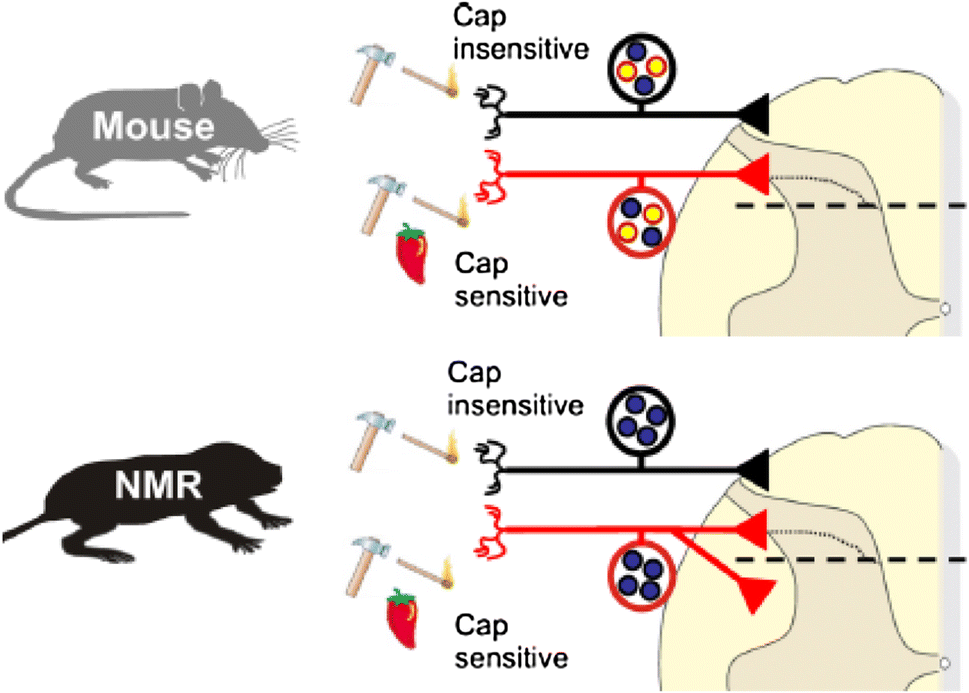114
Independent evolution of pain insensitivity in African mole-rats: origins and mechanisms - Journal of Comparative Physiology A
link.springer.comThe naked mole-rat (Heterocephalus glaber) is famous for its longevity and unusual physiology. This eusocial species that lives in highly ordered and hierarchical colonies with a single breeding queen, also discovered secrets enabling somewhat pain-free living around 20 million years ago. Unlike most mammals, naked mole-rats do not feel the burn of chili pepper’s active ingredient, capsaicin, nor the sting of acid. Indeed, by accumulating mutations in genes encoding proteins that are only now being exploited as targets for new pain therapies (the nerve growth factor receptor TrkA and voltage-gated sodium channel, NaV1.7), this species mastered the art of analgesia before humans evolved. Recently, we have identified pain insensitivity as a trait shared by several closely related African mole-rat species. One of these African mole-rats, the Highveld mole-rat (Cryptomys hottentotus pretoriae), is uniquely completely impervious and pain free when confronted with electrophilic compounds that activate the TRPA1 ion channel. The Highveld mole-rat has evolved a biophysical mechanism to shut down the activation of sensory neurons that drive pain. In this review, we will show how mole-rats have evolved pain insensitivity as well as discussing what the proximate factors may have been that led to the evolution of pain-free traits.



Birds cannot feel capsaicin either.
Nor apparently can a squirrel in my area who goes for bird suet. The spicy stuff just doesn’t make a difference to that one.
Spice Lord Squirrel
Sqwisatz Hadernut
I must not fear. Fear is the mind-killer. Fear is the little-death that brings total obliteration. I will face my fear. I will permit it to pass over me and through me. And when it has gone past I will turn the inner eye to see its path. Where the fear has gone there will be nothing. Only I will remain.